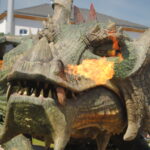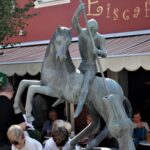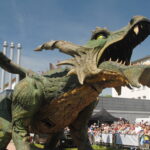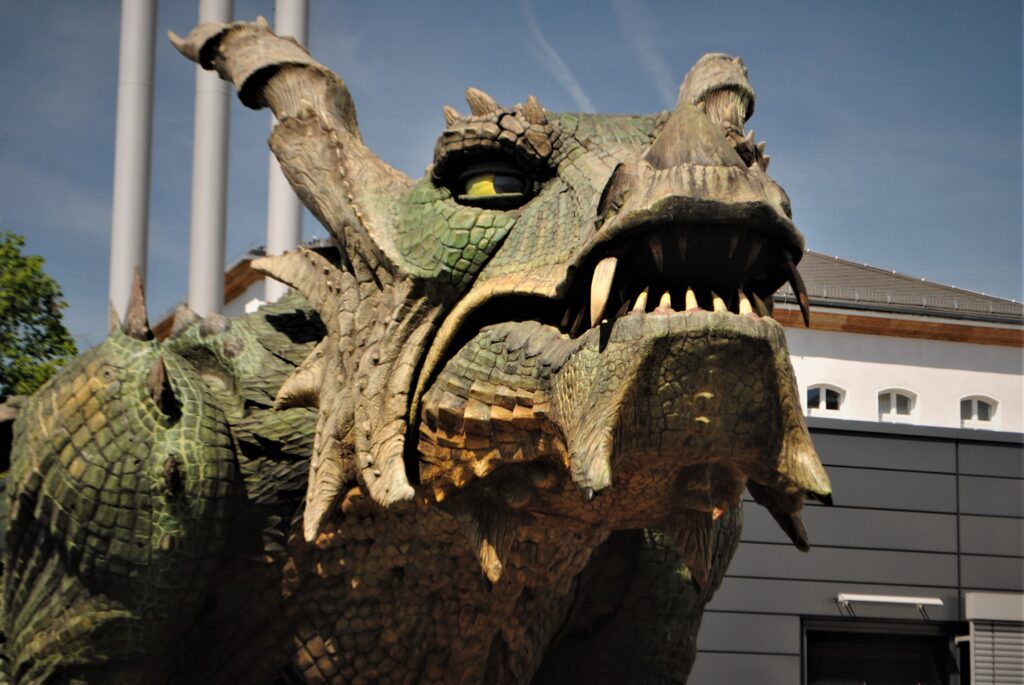 August 1431, a massive army assembles to defeat the rebel Bohemians. But blood and murder awaken a sleeping beast in a cave deep within the mountain. The dragon awakens from his centuries-long curse. The embodiment of evil, the fire-breathing fiend, cuts a swath through the peaceful countryside. There are only two ways to break the prophecy. The young lady of the castle can sacrifice herself to save her people, or the brave knight Udo can defeat the beast. Who will stop it? For the town of Furth lives as long as the dragon is dead.
August 1431, a massive army assembles to defeat the rebel Bohemians. But blood and murder awaken a sleeping beast in a cave deep within the mountain. The dragon awakens from his centuries-long curse. The embodiment of evil, the fire-breathing fiend, cuts a swath through the peaceful countryside. There are only two ways to break the prophecy. The young lady of the castle can sacrifice herself to save her people, or the brave knight Udo can defeat the beast. Who will stop it? For the town of Furth lives as long as the dragon is dead.
This is the story of Drachenstich (Slaying the Dragon), the play that has been performed in Furth im Wald since 1590. The tale is the oldest recorded German folktale, and many believe performances began even earlier.
When you think of Germany, especially Bavaria, the first thing that pops into most people’s minds is Oktoberfest, which happens in Munich in late September-October. But every town has its own beer festival which includes bratwurst and traditional music. Others may think immediately of the Christmas Markets and glühwein. And those are fun, but Germany has other unique festivals as well.
 Furth im Wald has been performing Drachenstich since 1590. A quaint, medieval town in the Bavarian Forest, Furth returns to its historical roots every summer in July and August. Building up to the play are parades, beer fests, fencing, archery, and medieval jousting. There is even a children’s version of the production, which Dave and I stumbled upon by accident. It was very entertaining and understandable despite being in German. Unfortunately, seats for the main show were already sold out that year.
Furth im Wald has been performing Drachenstich since 1590. A quaint, medieval town in the Bavarian Forest, Furth returns to its historical roots every summer in July and August. Building up to the play are parades, beer fests, fencing, archery, and medieval jousting. There is even a children’s version of the production, which Dave and I stumbled upon by accident. It was very entertaining and understandable despite being in German. Unfortunately, seats for the main show were already sold out that year.
The town of Furth, deep in the forest, is like stepping back in time. No modern conveniences are visible there during the summer months. Over 1400 costumed characters and 250 horses adorn the town, while dragon statues, paintings, and gifts are everywhere you look. There’s even a dragon museum. The streets are filled with medieval baggage wagons, hunters, falconers, farmers, fishermen, shopkeepers, and tradesmen.
months. Over 1400 costumed characters and 250 horses adorn the town, while dragon statues, paintings, and gifts are everywhere you look. There’s even a dragon museum. The streets are filled with medieval baggage wagons, hunters, falconers, farmers, fishermen, shopkeepers, and tradesmen.
With its roots in the annual Corpus Christi procession, the secular nature of the town’s celebrations was a thorn in the church’s side. Eventually, by the end of the 19th century, the church conceded and allowed the people their celebrations to avoid an uprising. One of many examples of Bavarians maintaining their celebration of fun and beer!
 In 2010, Tradinno came to town and replaced his retired predecessor. This new dragon weighed in at a whopping 11 tons, stands over 4.5 meters tall, and is 15.5 meters long. Listed in the Guinness Book of World Records as the largest walking animatron, Tradinno roars, breathes smoke, and spews fire. His name comes from the words tradition and innovation.
In 2010, Tradinno came to town and replaced his retired predecessor. This new dragon weighed in at a whopping 11 tons, stands over 4.5 meters tall, and is 15.5 meters long. Listed in the Guinness Book of World Records as the largest walking animatron, Tradinno roars, breathes smoke, and spews fire. His name comes from the words tradition and innovation.
This past weekend, at Oberfalztag (Upper Palatinate Day), Dave and I met Tradinno in person as he ‘flew’ into Amberg for the festival. We now have tickets for the show this year in August.
Do you believe in dragons?
